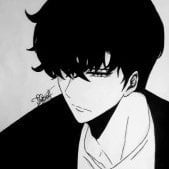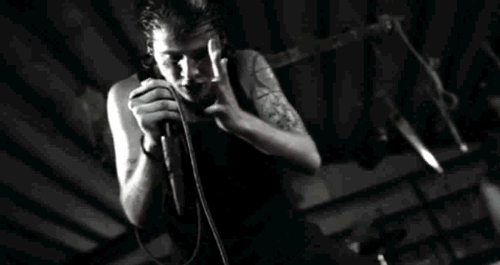Search the Community
Showing results for tags 'hlsl'.
-
Hello guys! I've recently found out that i can't use 2+ different shaders on same texture. I tried to work around layered argument in dxCreateShader function and DepthBias variable in shader and got nothing. Only one shader can exist at the time. I tried to apply one shader over another one so I used gTexture0 variable (defined in mta-helper.fx) to get material and draw my own texture over it. What am i missing? shader pseudo-code: // Fix by JeViCo // Link: https://vk.com/jevico texture gTexture0 < string textureState="0,Texture"; >; texture tex; technique Draw { pass P0 { Texture[0] = gTexture0; AlphaBlendEnable = true; } pass P1 { Texture[0] = tex; } } Of course i can make single-file shader however this is not what i'm trying to achieve
-
There's a shader and a simple float4x4 array in it. I just want to set the array's values with dxSetShaderValue. How should I do this? float4x4 thisBoneMatrix[6] = { float4x4( 0, 0, 0, 0, 0, 0, 0, 0, 0, 0, 0, 0, 0, 0, 0, 0 ), float4x4( 0, 0, 0, 0, 0, 0, 0, 0, 0, 0, 0, 0, 0, 0, 0, 0 ), float4x4( 0, 0, 0, 0, 0, 0, 0, 0, 0, 0, 0, 0, 0, 0, 0, 0 ), float4x4( 0, 0, 0, 0, 0, 0, 0, 0, 0, 0, 0, 0, 0, 0, 0, 0 ), float4x4( 0, 0, 0, 0, 0, 0, 0, 0, 0, 0, 0, 0, 0, 0, 0, 0 ), float4x4( 0, 0, 0, 0, 0, 0, 0, 0, 0, 0, 0, 0, 0, 0, 0, 0 ) };
-
Сразу оговорюсь, что в шейдерах я не понимаю от слова совсем, и мне очень сложно понять их работу, ибо для меня всё это очень неочевидные моменты до которых я не могу сам дойти. Итак, есть колеса, по умолчанию выглядят так: (Обратите внимание: У колеса есть хром. Какой-никакой, но есть) С этими колесами мне нужно производить следующие манипуляции: 1.Изменять ширину 2.Изменять размер 3.Изменять развал Для всего этого у меня есть шейдер (не мой): После "прогонки" колёс через этот шейдер на выходе получается это: Колёса могут в развал, ширину, смену цвета дисков, но главное -- не смотря на то что в шейдере вроде как считается этот самый хром, по факту его нет (для него как я понял используется эта текстурка (создать в скрипте и "загрузить" её в шейдер я не забыл) То-же самое случается когда колесо просто-напросто красится пиксельным шейдером, но если создать renderTarget, и скормить ему шейдеру заменяющему текстуру, то колесо покрасится, и при этом хром который есть на диске по стандарту никуда не улетучивается: Хром есть, цвет есть, значит нужно удалить из первой версии пиксельный шейдер, и оставить ему как задачу только лишь менять ширину/развал, а красить будем другим шейдером с помощью текстуры/рендертаргета: Накладываем "новый" шейдер для ширины и развала, + накладываем шейдер на покраску через замену текстуры, результат: Итак, вопросы: 1.Если можно, то как подружить эти два шейдера 2.Если можно, то как заменять только ОДНУ текстуру через "длинный" шейдер до того как вертексный шейдер её "растянет" (при этом этот шейдер применяется на все текстуры на обьекте) shader\applyToWorldTexture("*", object) 3.Если можно, то как починить хром в первой версии шейдера, который красит диск с помощью пиксельного шейдера (я кстати так и не смог понять почему он красит только диск, ведь накладывается шейдер на все текстурки) наверное, это условие: if (dot(delta,delta) < 0.2) { float4 Color = maptex * PS.Diffuse * 1; Color.a = PS.Diffuse.a; return Color; } p.s. Я шерстил по майкрософтовским докам, честно скажу: Не осилил и не понял Спасибо за внимание, надеюсь на вашу помощь. p.s. Если задача сложная, или большой обьём, то могу материально отблагодарить за работу
-
Hi! I just searched for lighting effects, and i found a shader for XNA. Its an Ambient and Diffuse lighting shader with Shadow Maps: #define GENERATE_NORMALS #include "mta-helper.fx" //------------------------------------------------------------------------------ // File: BasicRender.fx // // Copyright (c) Microsoft Corporation. All rights reserved. //------------------------------------------------------------------------------ //------------------------------------------------------------------------------ // Global variables //------------------------------------------------------------------------------ float4 g_MaterialAmbientColor = {0.05f, 0.05f, 0.05f, 0.05f}; // Material's ambient color float4 g_MaterialDiffuseColor = {0.75f, 0.75f, 0.75f, 0.75f}; // Material's diffuse color float3 g_LightPos = {1000, 2000, 1000}; // Position of light float3 g_LightDir = {0, 0, 0}; // Direction of light (temp) float4x4 g_mLightView; // View matrix of light float4x4 g_mLightProj; // Projection matrix of light float4 g_LightDiffuse = {0.75f, 0.75f, 0.75f, 0.75f}; // Light's diffuse color float4 g_LightAmbient = {0.05f, 0.05f, 0.05f, 0.05f}; // Light's ambient color texture g_MeshTexture; // Color texture for mesh texture g_ShadowMapTexture; // Shadow map texture for lighting float4x4 g_mWorld; // World matrix for object float3 g_CameraPos; // Camera position for scene View float4x4 g_mCameraView; // Camera's view matrix float4x4 g_mCameraProj; // Projection matrix //------------------------------------------------------------------------------ // Texture samplers //------------------------------------------------------------------------------ sampler MeshTextureSampler = sampler_state { Texture = (gTexture0); MipFilter = LINEAR; MinFilter = LINEAR; MagFilter = LINEAR; }; sampler ShadowMapSampler = sampler_state { Texture = <g_ShadowMapTexture>; MinFilter = POINT; MagFilter = POINT; MipFilter = POINT; AddressU = Clamp; AddressV = Clamp; }; //------------------------------------------------------------------------------ // Vertex shader output structure //------------------------------------------------------------------------------ struct VS_OUTPUT { float4 Position : POSITION0; // vertex position float2 TextureUV : TEXCOORD0; // vertex texture coords float3 vNormal : TEXCOORD1; float4 vPos : TEXCOORD2; }; struct PS_INPUT { float2 TextureUV : TEXCOORD0; // vertex texture coords float3 vNormal : TEXCOORD1; float4 vPos : TEXCOORD2; }; struct VS_SHADOW_OUTPUT { float4 Position : POSITION; float Depth : TEXCOORD0; }; //------------------------------------------------------------------------------ // Utility function(s) //------------------------------------------------------------------------------ float4x4 CreateLookAt(float3 gView, float3 gProjection, float3 up) { float3 zaxis = normalize(gView - gProjection); float3 xaxis = normalize(cross(up, zaxis)); float3 yaxis = cross(zaxis, xaxis); float4x4 view = { xaxis.x, yaxis.x, zaxis.x, 0, xaxis.y, yaxis.y, zaxis.y, 0, xaxis.z, yaxis.z, zaxis.z, 0, -dot(xaxis, gView), -dot(yaxis, gView), -dot(zaxis, gView), 1 }; return view; } float4 GetPositionFromLight(float4 position) { float4x4 WorldViewProjection = mul(mul(gWorld, gLightDiffuse), gLightDirection); return mul(position, WorldViewProjection); } //------------------------------------------------------------------------------ // This shader computes rudimentary transform and lighting. // The XNA VertexDeclaration of our models is PositionNormalTexture. //------------------------------------------------------------------------------ VS_OUTPUT RenderShadowsVS( float3 position : POSITION, float3 normal : NORMAL, float2 vTexCoord0 : TEXCOORD0 ) { VS_OUTPUT Output; //generate the world-view-projection matrix float4x4 wvp = mul(mul(gWorld, gView), gProjection); //transform the input position to the output Output.Position = mul(float4(position, 1.0), wvp); //transform the normal to world space Output.vNormal = mul(normal, gWorld); //do not transform the position needed for the //shadow map determination Output.vPos = float4(position,1.0); //pass the texture coordinate as-is Output.TextureUV = vTexCoord0; //return the output structure return Output; } VS_SHADOW_OUTPUT RenderShadowMapVS(float4 vPos: POSITION) { VS_SHADOW_OUTPUT Out; Out.Position = GetPositionFromLight(vPos); // Depth is Z/W. This is returned by the pixel shader. // Subtracting from 1 gives us more precision in floating point. Out.Depth.x = 1-(Out.Position.z/Out.Position.w); return Out; } //------------------------------------------------------------------------------ // Pixel shader output structure //------------------------------------------------------------------------------ struct PS_OUTPUT { float4 RGBColor : COLOR0; // Pixel color }; //------------------------------------------------------------------------------ // This shader outputs the pixel's color by modulating the texture's // color with diffuse material color //------------------------------------------------------------------------------ PS_OUTPUT RenderShadowsPS( PS_INPUT In ) { PS_OUTPUT Output; // Standard lighting equation float4 vTotalLightDiffuse = float4(0.1f,0.1f,0.1f,0.1f); float3 lightDir = normalize(g_LightPos+In.vPos); // direction of light vTotalLightDiffuse += g_LightDiffuse * max(0,dot(In.vNormal, lightDir)); vTotalLightDiffuse.a = 0.5f; // Now, consult the ShadowMap to see if we're in shadow float4 lightingPosition = GetPositionFromLight(In.vPos);// Get our position on the shadow map // Get the shadow map depth value for this pixel float2 ShadowTexC = 0.5 * lightingPosition.xy / lightingPosition.w + float2( 0.5, 0.5 ); ShadowTexC.y = 1.0f - ShadowTexC.y; float shadowdepth = tex2D(ShadowMapSampler, ShadowTexC).r; // Check our value against the depth value float ourdepth = 1 + (lightingPosition.z / lightingPosition.w); // Check the shadowdepth against the depth of this pixel // a fudge factor is added to account for floating-point error if (shadowdepth-0.03 > ourdepth) { // we're in shadow, cut the light vTotalLightDiffuse = float4(0,0,0,1); }; Output.RGBColor = tex2D(MeshTextureSampler, In.TextureUV) * (vTotalLightDiffuse + g_LightAmbient); return Output; } PS_OUTPUT DiffuseOnlyPS(VS_OUTPUT In) : COLOR { PS_OUTPUT Output; //calculate per-pixel diffuse float3 directionToLight = normalize(g_LightPos - In.vPos); float diffuseIntensity = saturate( dot(directionToLight, In.vNormal)); float4 diffuse = g_LightDiffuse * diffuseIntensity; float4 color = diffuse + g_LightAmbient; color.a = 0.0; Output.RGBColor = tex2D(MeshTextureSampler, In.TextureUV) * color; return Output; } PS_OUTPUT TextureOnlyPS(float2 TextureUV : TEXCOORD0) : COLOR { PS_OUTPUT Output; Output.RGBColor = tex2D(MeshTextureSampler, TextureUV); return Output; } float4 RenderShadowMapPS( VS_SHADOW_OUTPUT In ) : COLOR { // The depth is Z divided by W. We return // this value entirely in a 32-bit red channel // using SurfaceFormat.Single. This preserves the // floating-point data for finer detail. return float4(In.Depth.x,0,0,1); } //------------------------------------------------------------------------------ // Renders scene to render target //------------------------------------------------------------------------------ technique TextureRender { pass P0 { VertexShader = compile vs_2_0 RenderShadowsVS(); PixelShader = compile ps_2_0 TextureOnlyPS(); } pass P1 { VertexShader = compile vs_2_0 RenderShadowsVS(); PixelShader = compile ps_2_0 RenderShadowsPS(); } pass P2 { // These render states are necessary to get a shadow map. // You should consider resetting CullMode and AlphaBlendEnable // before you render your main scene. CullMode = CW; ZEnable = TRUE; ZWriteEnable = TRUE; AlphaBlendEnable = TRUE; VertexShader = compile vs_2_0 RenderShadowMapVS(); PixelShader = compile ps_2_0 RenderShadowMapPS(); } } This is not the original .fx file, i configured it for MTA. The diffuse and the ambient light works correctly, but not generating shadows. Any Idea?



